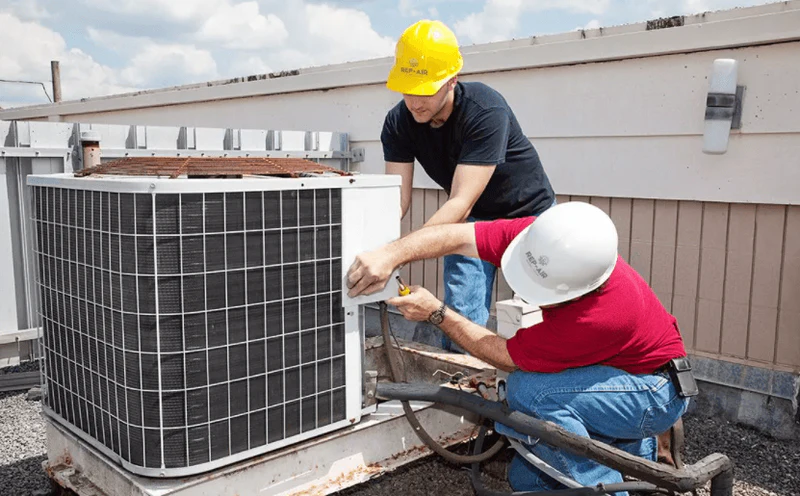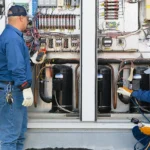Installing a new HVAC system is a significant project that requires planning, preparation, and careful execution. For homeowners, the process can seem overwhelming, especially if it is their first time replacing or upgrading a system. Understanding what to expect helps ease uncertainty and ensures a smoother experience. From initial assessments to the final testing phase, each step is essential in creating a system that operates efficiently and reliably. A properly installed HVAC system not only delivers comfort but also supports energy efficiency and long-term savings. Knowing the process in advance helps set realistic expectations and reduces stress.
Pre-installation planning and assessment
The first stage of an HVAC installation begins before any equipment arrives at the home. Contractors will typically start with a comprehensive evaluation of the property, examining the current system, ductwork, and energy requirements. This assessment helps determine the correct size and type of unit needed to keep the home comfortable while avoiding wasted energy. Homeowners are usually asked about preferences, budget, and any concerns they have regarding their current setup. During this stage, technicians may also inspect the insulation and airflow to ensure the new system performs optimally. For families in Humble, TX, this planning stage is crucial, as the local climate requires an HVAC system that can effectively handle both heat and humidity. The preparation phase sets the foundation for a successful installation, ensuring the new system is a perfect fit for the home.
Removing the old system and preparing the area
Once planning is complete, the next step involves removing the existing HVAC system. This process consists of disconnecting old equipment, handling refrigerants with care in accordance with environmental standards, and preparing the installation site. Removing an old system can take time, particularly if the components are outdated or have been in place for many years. Technicians ensure that all old parts are safely removed to make way for the new equipment. During this step, ductwork may be inspected and cleaned, as buildup or leaks can impact the performance of the new system. Preparing the area also involves securing electrical connections and verifying the structural supports, ensuring everything is ready for the incoming unit. This preparation is crucial to prevent complications once the new HVAC system is installed.
Installing the new HVAC system
With the area prepared, the actual installation of the new HVAC system begins. This stage involves placing the indoor and outdoor units, connecting refrigerant lines, and ensuring proper electrical wiring. Ductwork adjustments or replacements may also be completed if needed, especially if the previous system was not delivering even airflow. The installation team pays close attention to positioning and sealing components to prevent leaks or inefficiencies. Depending on the system’s size and complexity, this step can take several hours to complete. Homeowners may notice technicians moving between indoor and outdoor areas, checking each connection carefully. Proper installation at this stage ensures that the system will run smoothly, delivering both comfort and energy savings. Once in place, the system is connected to the thermostat for accurate temperature control.
System testing and final adjustments
After installation, the system undergoes thorough testing to confirm that it is functioning as intended. Technicians will run the HVAC unit through heating and cooling cycles, checking for proper airflow, correct refrigerant levels, and accurate thermostat response. Electrical connections are inspected to ensure safety, and ductwork is tested for leaks that could reduce efficiency. Adjustments are made as needed, whether fine-tuning airflow or calibrating the thermostat for better accuracy. This step reassures homeowners that the system has been installed correctly and is ready for everyday use. Testing also provides technicians with an opportunity to identify minor issues before they become larger problems, thereby protecting the investment made in the new HVAC system.
Read More: https://acubi.us/indoor-air-quality/
Homeowner guidance and maintenance tips
The final stage of an HVAC installation often involves educating the homeowner about their new system. Technicians may walk through how to use the thermostat, change filters, and recognize warning signs that indicate maintenance is needed. Many companies also provide information about warranties, recommended service schedules, and energy-saving tips to maximize performance. This guidance helps homeowners feel confident in operating and maintaining their new system over time. Establishing good maintenance habits early ensures that the HVAC unit continues to run efficiently, extending its lifespan and reducing repair costs. By the end of the process, homeowners not only have a new system but also the knowledge they need to care for it properly.
Critical stages, from initial planning to final testing and homeowner education. Each step plays a crucial role in ensuring that the system operates efficiently, safely, and reliably for years to come. By understanding the process, homeowners can prepare themselves for what to expect, reducing stress and building confidence in their investment. From proper sizing and planning to careful installation and system testing, every detail contributes to long-term performance and comfort. With the right approach, HVAC installation becomes less of a daunting project and more of a valuable upgrade that enhances both comfort and energy efficiency.



